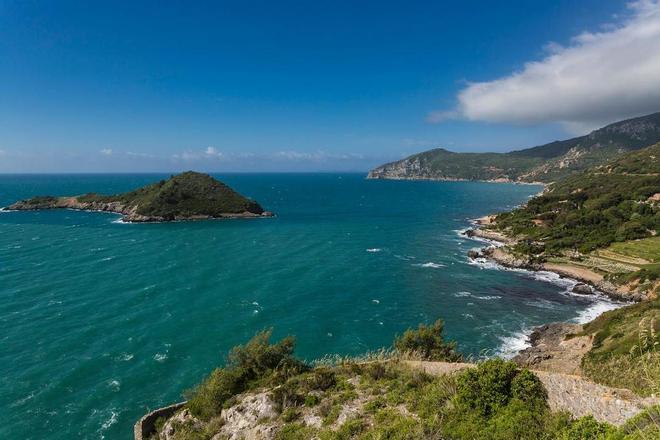Mack Time!
by Ben Knaggs on 29 Jun 2013

A typical north WA Spanish mack. Fish like this will be thick around the inshore reefs up here right through winter and well into spring Ben Knaggs
Winter means many different things to many different fishos, but for those in the north of Western Australia, winter means mackerel! As the winter dry season sets in and coastal waters cool rapidly, big schools of Spanish mackerel move in close to shore to feed and apparently also to breed. This puts them within easy reach of small of trailerboats, and even land-based anglers in certain areas.
There’s a few different ways to go about targeting these winter run mackerel. Trolling high speed bibbed lures like Halco Laser Pros or Rapala X Raps would have to be the most common method employed, and it certainly works extremely well. There’s not a huge amount required to successfully troll up Spaniards (save from fishing where the fish are!), but most times it’s best to run lures a fair way back behind the boat so that they are well clear of the boat noise and wash that these fish can often be wary of. Don’t be afraid to troll along at a fair clip either – say 6-9 knots - as macks like fast food.
A more stationary approach is to position your boat over likely mack country and fish unweighted baits of whole garfish, pilchards (mulies in WA) or even small school or spotted mackerel back down a light berley trail. Many anglers deploy this ‘floater’ bait out the back of the boat while bottom bashing for reef fish like red emperor and coral trout, picking up a mack or two as a bonus.
If you like some thrills in your fishing, casting floating stickbaits across the top of schooling mackerel is great fun. Spaniards are known for their Polaris missile style attacks on baitfish, often launching many metres from the water in a vertical strike, and that’s exactly how they take a surface stickbait. Really explosive fishing!
However you choose to target mackerel, the best time to go about it is always early in the morning or late in the afternoon, around the low light periods of dawn and dusk. Time of tide is not as important as time of day, although generally a bit of run in the water helps. The full moon puts them off a bit too, so if possible, avoid the few days around the height of this bright moon phase.
Spaniards are reef edge hunters, so fish just away from any significant reefs, over the deeper water as the reef drops away to the seafloor rather than right up next to or over the top of the reef. Although macks have no qualms about hunting very close to shore, they’re usually most comfortable in water around 15-30m deep.
Spanish mackerel have vicious, meshing teeth designed to slice they prey in half, and these dentures make quick work of even very heavy nylon trace line. So a wire trace is a necessity. Single strand wire from 45-65lb test strength is best for the job, and can be rigged using a simple haywire twist. If you have trouble making this somewhat fiddly connection, a haywire twist tool is worth the few dollars investment.
Many anglers go way over the top with wire, fishing long traces of unnecessarily heavy steel. Mackerel have unbelievable eyesight, and agricultural rigging is a sure way to have them shying off your lures or baits. So keep wire traces short (no more than 30cms), using brown (coffee) coloured wire that won’t reflect as much light and so be as indiscernible to the fish as possible.
When trolling, that fang-filled, bony jaw of a Spanish mack can be hard to get a solid hook set in, especially since the typical mack attack is a lightning fast, slashing affair. To up the odds of everything coming up solid, try equipping lures with single, inline hooks. Rigged with the point facing down, the hook is more likely to lodge in the fleshier lower jaw or jaw hinge where it can get a solid hold.
Spanish macks are great sportfish that will always tear off on one or two breakneck runs, but unfortunately in northern WA it’s not always possible to use gear light enough to enjoy their line tearing sprints. Sharks absolutely adore a feed of mackerel, and in most areas where mackerel mass it’s a sure bet the sharks will be thick too. So beefier than necessary outfits are often best, as are heavy handed fighting tactics to get hooked fish to the boat. If the sharks are really bad, try turning the boat and chasing the fish down immediately upon hook-up. This gives the grey coats far less time to home in on the struggling fish.
Once on the table it’s pretty clear why the Noahs like macks so much – Spanish mackerel are great eating fish. They can be prepared in a number of ways but I’m a particular fan of smoked mackerel or mackerel sashimi – gourmet stuff!
If you want to link to this article then please use this URL: www.sail-world.com/111371